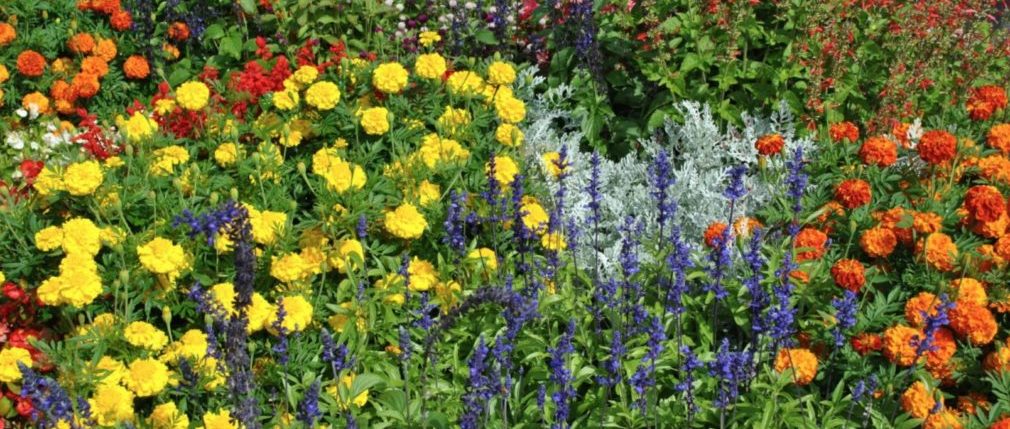Wildflowers have become increasingly popular in residential landscaping — and for good reason. They bring natural beauty, support pollinators, and require far less maintenance than traditional turf lawns or exotic ornamentals. If you’re considering adding wildflowers to your yard, you’re not just improving curb appeal; you’re also embracing eco-friendly and sustainable landscaping.
In this blog post, we’ll show you how to use wildflowers in residential landscaping, covering everything from design strategies and plant selection to maintenance tips.


Why Choose Wildflowers for Residential Landscaping?
Incorporating wildflowers in residential landscaping offers numerous benefits:
Eco-Friendly: Wildflowers are often native to your region, which means they thrive without synthetic fertilizers or excessive watering.
Low-Maintenance: Once established, wildflowers typically require less care than traditional lawns.
Biodiversity Boost: They attract bees, butterflies, and birds, promoting a healthy garden ecosystem.
Visual Appeal: A mix of colors, heights, and textures creates a stunning natural look throughout the seasons.
Step-by-Step Guide to Designing a Wildflower Landscape
1. Assess Your Space
Begin by evaluating your yard:
Is it sunny or shady?
How’s the soil drainage?
Do you want a full wildflower meadow or just accents?
Understanding your site will help you choose the right native wildflowers that will thrive.
2. Choose Native Wildflowers
Native plants are best suited for your local climate and soil. Use a local nursery or consult your state’s native plant society for guidance.
Some common choices include:
Black-Eyed Susan (Rudbeckia hirta)
Purple Coneflower (Echinacea purpurea)
Lupine (Lupinus spp.)
California Poppy (Eschscholzia californica)
Milkweed (Asclepias spp.) for monarch butterflies
Using native wildflowers ensures long-term success and minimal intervention.
3. Design with Purpose
Wildflower landscaping doesn’t have to look messy. Use design principles such as:
Borders and Pathways: Define your wildflower areas with edging, stones, or mulch paths.
Color Blocking: Group flowers by color or height for dramatic visual impact.
Mixed Use: Combine wildflowers with ornamental grasses or native shrubs for structure.
4. Prepare the Soil
Wildflowers need well-prepared soil:
Remove existing turf or weeds.
Loosen soil to a depth of 4–6 inches.
Avoid adding rich compost; native wildflowers thrive in lean soil.
5. Seed and Plant
For a wildflower meadow look, sow seeds in the fall or early spring. For more control, use transplants from a nursery.
Tips:
Mix seed with sand for even distribution.
Press seeds lightly into the soil — don’t bury deeply.
Water lightly but consistently until germination.
Wildflower Garden Maintenance Tips
One of the biggest perks of low-maintenance landscaping with wildflowers is the reduced upkeep. Still, a little attention ensures they thrive:
Watering: Once established, most wildflowers are drought-tolerant.
Weeding: Control invasive weeds early in the season.
Deadheading: Removing spent blooms can encourage more flowering.
Mowing: For meadow-style gardens, mow once a year in late fall to help reseeding.
Supporting Pollinators and Wildlife
Planting wildflowers is an easy way to build an eco-friendly landscaping strategy. Pollinators like bees, butterflies, and hummingbirds depend on native blooms. Consider adding a shallow water source and avoiding pesticides to create a true sanctuary.
Landscaping Ideas Using Wildflowers
Wildflower Borders: Replace traditional foundation plantings with native blooms.
Pollinator Patches: Dedicate a section of your yard for bees and butterflies.
Wildflower Lawn Alternative: Replace grass in low-traffic areas.
Mixed Cottage Garden: Blend wildflowers with vegetables and herbs for a productive, colorful garden.
Sustainability and Aesthetic in Harmony
Using wildflowers in residential landscaping doesn’t mean giving up design control. In fact, it’s about working with nature instead of against it. With a thoughtful plan and the right mix of native plants, your yard can be beautiful, sustainable, and beneficial to local ecosystems.
Final Thoughts
Whether you’re a seasoned gardener or just getting started, adding wildflowers to your landscape is a smart, rewarding choice. By embracing native wildflowers, you’ll enjoy vibrant color, reduced yard work, and a healthier environment for all.


